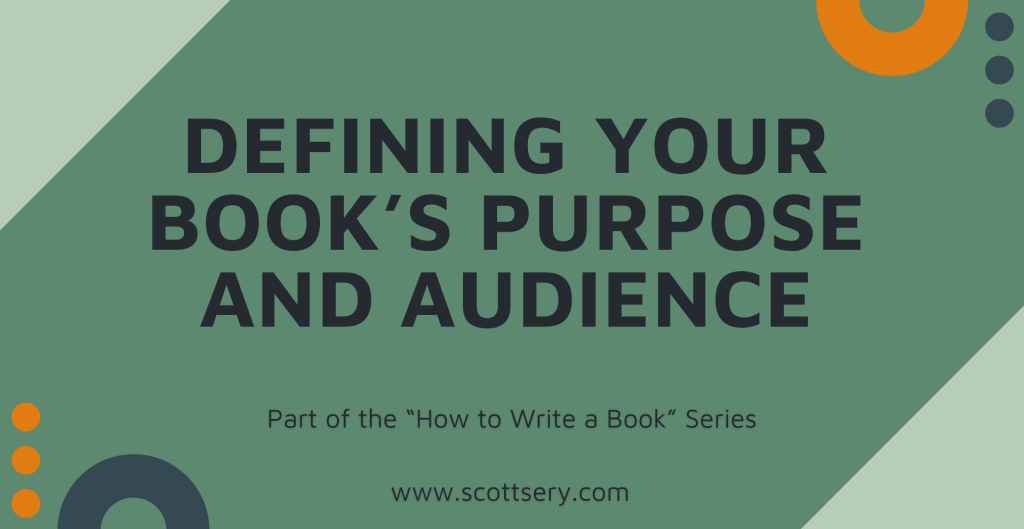
Why Proper Prior Planning is Essential
Have you ever cooked a meal? If you’re alive, you most likely have cooked at least one. Something like cold cereal isn’t hard to put together, and of course that’s not really cooking, now is it? Suppose you wanted to make a homemade pizza. And you know the basic ingredients: dough, sauce, cheese, and pepperoni. Easy enough. So you mix a little flour and water, and then you grind up some tomatoes. You throw in a bit of salt and probably some oregano, because that sounds about right… you see where this is going, don’t you? Trying to cook something, even something as familiar as pizza, needs a recipe to ensure it turns out just right and not a rock-hard lump of overcooked bread-like substance slathered with pureed tomatoes, burnt cheese, and hopefully the pepperoni is edible.
Similarly, if you were to go on a road trip to see all the state capitals along the west coast of the US. You’d plan it out, wouldn’t you? You’d at least have a map, and know which highways to take, how long your drive would be, and where you should stop.
When you sit down to write a book, clarity comes first. Without it, writers end up wasting time and get off track. Sometimes the main points are missed, and ultimately the readers are confused and the overall impact of the book is weakened to the point where you’d get better returns hitting people over the head with it rather than having them read it.
My lawyers have advised me to advise you not to hit people over the head with books.
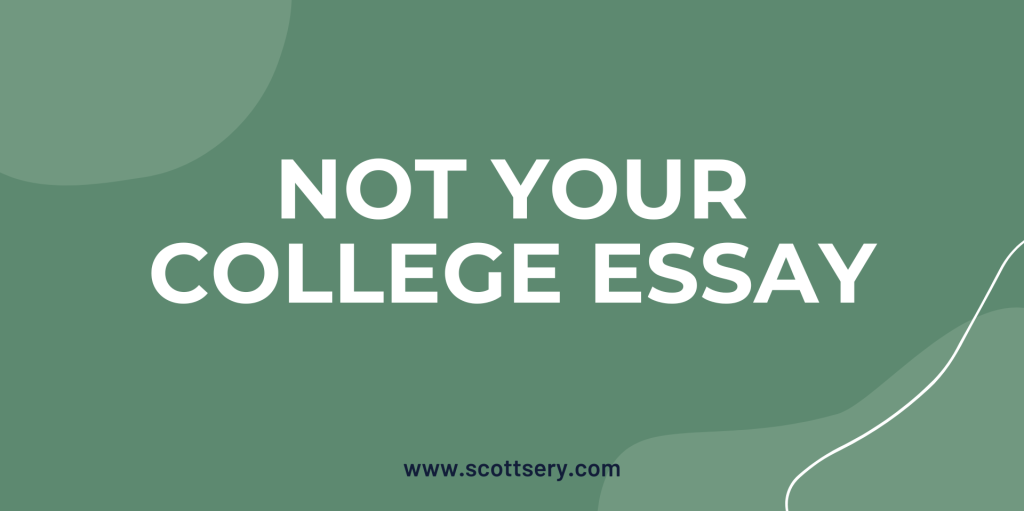
Your College Essays Weren’t the Same as Books
We’re approaching this from a non-fiction point of view. There was some stuff that you learned in school that will apply here, but there’s a whole lot that certainly won’t.
Those high school and college essays had one audience: your teacher. They had one purpose: show that you understand the concepts. And they had one action goal: to get the teacher to give you a good grade (maybe even a smiley face or a sticker so you get the warm fuzzy feeling with it). They’re far shorter than a book (750 to 2,000 words for most of your undergraduate essays; even shorter for high school).
When you write a book, however, you have far different audiences, purposes, and goals. And above all of that, you have to ensure that you’re holding the reader’s interest, so entertaining through storytelling is also essential.
So what’s the same? What did you learn in school that can apply to your book writing?
First of all, if you took a creative writing class, some of that applies. However, those classes were largely focused on using a butt-ton of adjectives, and creating this flowery and overly descriptive prose. You’ll need some of that to create that entertainment and storytelling aspect of your book, but you don’t want to go overboard in non-fiction, because this stuff is all about inspiring people, educating people, and helping them grow – not just entertaining.
Second, if you did your essays and writing properly back in school, you learned the three parts. Set the stage (identify the problem), offer the solution, back it up with facts and figures. It’s an open the loop, show what it’s all about, and then close the loop scenario. I bet you didn’t even notice that in this section I did that very thing (second sentence opened the loop, middle stuff expanded on it, this paragraph closed it out).
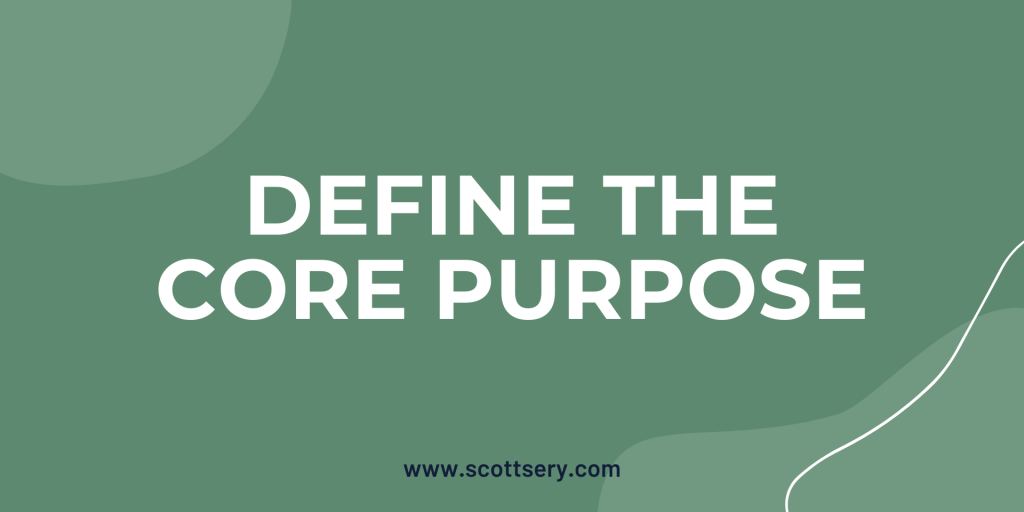
What is the Core Purpose of This Book?
Now that we’re very familiar with the fact that essays are indeed not books, we can start getting into the purpose of the book. In other words, why are you writing the book? If you’re running a business, you’ve probably already done something very similar; we usually call this a mission statement (and then combine it with vision and values).
How’s that look? Let’s check out a few examples:
Suppose you’re writing a personal growth or a business book. So, your purpose for writing might be, “My purpose for writing this book is to help small business owners and entrepreneurs to stop feeling overwhelmed by learning a simple, yet repeatable, strategy to help grow their client base.”
Maybe you’re writing your memoir, autobiography, or a collection of stories from your life. Your statement might read, “My purpose is to share my journey of overcoming addiction so those who face similar challenges don’t feel alone in their struggles, but feel more empowered to take back control of their life and health.”
Although I don’t dabble in fiction, your purpose statement for this could include, “My purpose is to entertain readers through a fast-paced mystery that keeps them on their toes as I explore themes of trust, betrayal, and redemption.”
Notice that the purpose statement is all about you, why you’re writing this book. However, the statement weaves in some of the other aspects that we’re going to get to in just a little bit. It’s why you’re writing the book, but it’s also about what you want the reader to do or feel as they read and when they’re finished reading.
Let’s keep going, but at the end of this post I’ll have some ideas on how you can work through your purpose statement if you haven’t fully developed that already. Our next step, though, is how to develop the ideal reader. Something you need to know before you start writing your book, so you can shape the language to speak specifically to them.
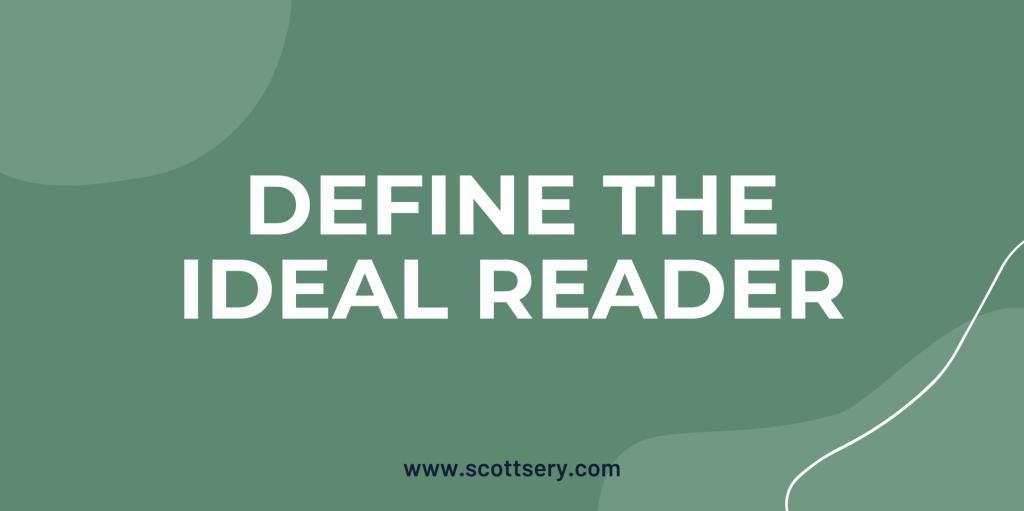
Who is Your Ideal Reader?
Over the years I have been in a lot of networking groups. Most of them have someone that is in the insurance business – home and auto, stuff like that. We would do activities that we would develop our target audience. They almost always said something like, “Well, everyone has a place to live and everyone has a car, so really I work with everyone!”
It was really hard to send referrals to those people. Yes, they might have been able to save my friends and family money on their insurance, but so could most other insurance agents. They would have done better by refining their target audience (something like, “I find the best deals for teenage drivers” would have been far better than “everyone.”)
Similarly, your book needs to have a defined audience. When you can define that audience before you start writing, you can add subtle nuances that only that target would fully understand.
Look back up at the sample purpose statements. Let’s expand on those a little bit so we can see how that right audience works.
“My purpose for writing this book is to help small business owners and entrepreneurs to stop feeling overwhelmed by learning a simple, yet repeatable, strategy to help grow their client base.”
Small business owners and entrepreneurs who feel overwhelmed. Nice refined audience that has a need. If a stay-at-home mom picked up this book, would it resonate with her? Probably not, unless she was kicking around the idea of starting a home-based business. If you were to write a book with this purpose statement, you could include things like mistakes that are made with tracking profit and loss, marketing mistakes, and perhaps even the mistake of trying to target everyone instead of refining your ideal customer. The stay-at-home mom might get something out of the book, but the target audience will get a whole lot out of the book.
“My purpose is to share my journey of overcoming addiction so those who face similar challenges don’t feel alone in their struggles, but feel more empowered to take back control of their life and health.”
I’m not an addict; I have never struggled with drug use. But I might pick up the book hear the story of overcoming and the power of positive thinking. Maybe even learn some strategies on how to overcome procrastination if I twist the principles just a little bit. The ideal reader, though, is one who has used before and they are teetering on the edge of relapse. The book could talk about chasing the dragon, or the womp-womp-womp feeling of shooting up. The addict would understand that, and the author could describe how to overcome those intense feelings of wanting to relapse.
“My purpose is to entertain readers through a fast-paced mystery that keeps them on their toes as I explore themes of trust, betrayal, and redemption.”
Those who read fantasy, likely won’t pick up mystery. Those who love romance, might not enjoy this genre. Sticking to one genre, this author appeals to people who love that genre. They could mix in some romance, perhaps a little fantasy, maybe something with vampires or zombies – those are still popular I think – but the main audience is the mystery lovers.
Keep on keeping on, and we’ll have some exercises at the end on how to define your ideal reader.

What Action do You Want the Reader to Take?
When the book is done, and it’s out there for the world to read, you want more than just eyes on the pages, right? Certainly, people reading and learning about you is great, but there should be a little bit more. Especially if your goal is to grow a brand, a business, or your public speaking profile.
Before you start writing, you want to make sure that you’re steering the reader toward your desired action. There are plenty of things you can do with a book, far more than just hold it up and say, “Look ma, I’m a published author!”
1 – Use it to show off your expertise. Sometimes you just need to flex and set yourself above the competition. When you’re already doing great things, or on the verge of doing great things, you need a way to set yourself apart from the competition. Being a published author is a great way to add credibility to your growing reputation. What it does is shows that you’re an expert, and people should trust you. It is, however, slightly different than the next desired action.
2 – Draw in clients for your existing business. If you’re a business owner, or an entrepreneur, you want more clients. Writing a book is going to certainly set you apart as you show off your expertise, but drawing in clients to an existing business is a little different. When you have this desired action, you structure the book in a way that shows off client success stories, so when the reader is done, they’ve grown to trust you and you can get them on as clients even faster.
3 – Draw in clients for a new business. Perhaps you’re hanging up the hat on your business, but you’re not done working. There are plenty of people who love the industry they’re in, but they’re off on a new adventure. Perhaps they want to teach the next generation all the tips and tricks they’ve learned over the years, and they’re using their book to draw people into their online membership group, into a training program, or a coaching group.
4 – Promote yourself for speaking or consulting gigs. So many professionals have an incredible wealth of knowledge that it’s a shame they aren’t able to share it. But what’s really powerful is combining an incredible personal story, and that professional knowledge. Using that book you get people interested and they can reach out to you to book you as a speaker. Or, you can show off that you’re a published author and they’re more likely to pick you from the pool of applicants.
There are a ton of possibilities, and with the Author’s Mastery Academy, part of our work together would be to narrow down that niche so the book hits just right.
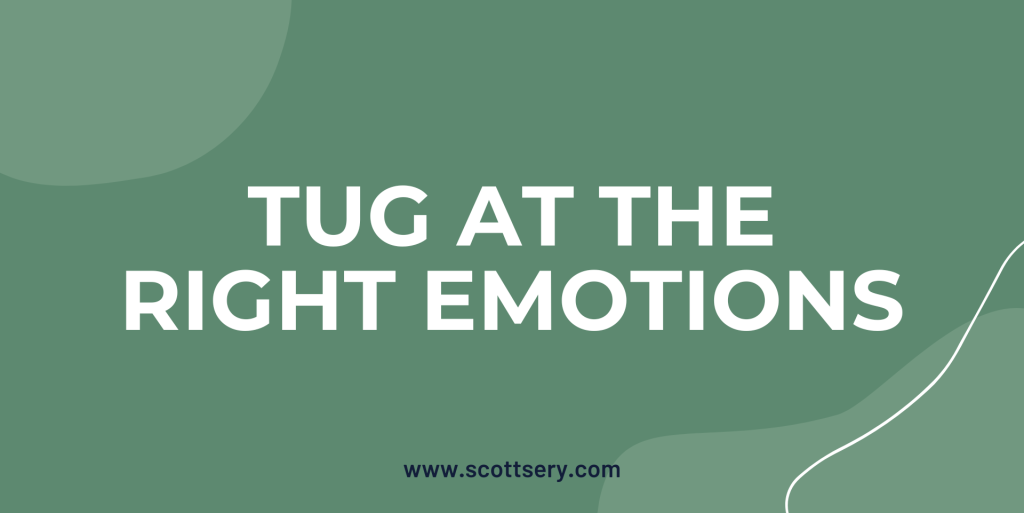
What Emotional Response Are You Trying to Elicit?
When you’re building trust through your book, you’re showing the reader what they should feel. It’s a very common practice, actually. And you’ve probably been “victim” to this manipulation before. Have you ever cried during a movie? It’s all made up scenarios, but the writers know just how to instruct the actors, and the actors know just what to do, so you end up having your heart strings tugged. It’s all about setting things up the way you want them set up.
And it’s important to get this right, because when you have the readers emotionally on board, you can then tell them exactly what to do when they’re done reading.
In the book The Myth of Normal, the emotional response was anger at the system. It’s broken and designed to keep people unhealthy. But then he offered ways that we can reclaim our own health, and ideas on how we can heal without relying on expensive temporary fixes.
In his book on recovery, Shane Fichter tells stories about his life growing up and as a young adult. Stories that people read and wonder how he’s even still alive. But as they are shocked, they’re looking inward at their own struggles. Certainly, the addicts will resonate more, but anyone that’s had tough times will too. He can guide those emotions into signing up for his coaching business.
In a book that tugs at the heart strings, the author might be leading the reader to donate or get involved with a charity.
In a book that creates laughter, the author might be guiding the reader to following him or her on social media and selling stand-up comedian services.
The important part is that you want to create that feeling, and that feeling leads to the action you desire the reader to take.
Common Mistakes That Sabotage Clarity
A lot of new authors are so excited to get their book out there, that they sabotage their own clarity by skipping these steps.
They might try to write for everyone, and in essence, write for no one.
They skip their purpose definition, thinking it will be clear in the writing and come out as they go along.
They’ll miss the mark on what emotions they’re trying to pull out, and they won’t be able to clearly define their call to action at the end.
And often, an author confuses him or herself. They start out on track, deviate from the original idea, come back to it, and ultimately change their goals or structure part way through. Which is why the entire guide on how to write a book is important. This is just the start; the rest needs follow through as well.
Here’s What Ya Gotta Do!
Alright, so I promised that I’d help you figure this all out. I have some prompts that you can work through these ideas. You can go at this on your own, however, I recommend getting expert help through the Author’s Mastery Academy. Just click the button and sign up!
Step 1: Define Your Book’s Purpose
Let’s clarify why you’re writing this book:
- What problem am I solving for my reader? ________________________________
- What transformation do I want readers to experience? _____________________
- What is the single biggest takeaway I want readers to have? _______________
- My book’s purpose statement:
“This book will help ____________________________ by ____________________________.”
Step 2: Identify Your Ideal Reader
Let’s create an ideal reader persona:
You might not know all of this information, and that’s okay. Fill in as much as you do know.
- Name: ________________________
- Age: ____________ Occupation: ________________________
- Biggest goal or desire: ______________________________________________
- Biggest challenge or pain point: _____________________________________
- Where they get information (books, podcasts, social media, etc.): _________
- One-sentence description of your ideal reader:
“My reader is ____________________________ who wants ____________________________.”
Step 3: Decide What You Want Readers to Do
Be intentional about what happens after someone finishes your book:
- After finishing my book, I want readers to: _____________________________
Examples: sign up for a newsletter, join a coaching program, adopt a new habit, or share the message.
Step 4: Define the Emotional Response You Want
How do you want readers to feel when they close your book:
- I want readers to feel: _______________________________________________
Examples: inspired, outraged, hopeful, validated, confident.
- One story, example, or strategy I can use to trigger this emotion: ________________________
